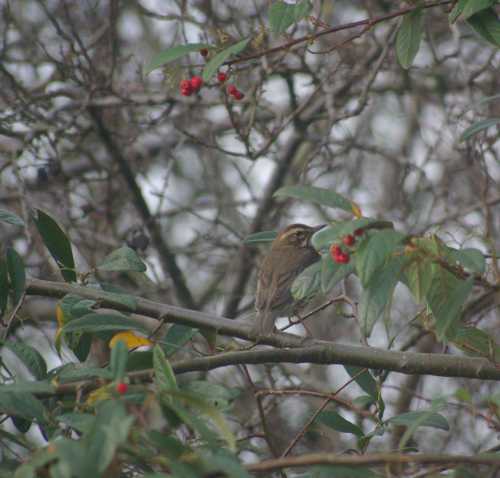BirdLife International: Decline Of Europe's Farmland Birds
Continuing my theme of feeding the birds in winter (thanks to ample berries and fruits, the flowers of which were pollinated by bees), I was reminded of the plight of farmland birds.
It’s relevant to bees, because I think it raises further questions about intensive agriculture practice and chemical use.
Research: BirdLife International
BirdLife International gathered data from across Europe, monitoring populations of farmland birds.
Key points
Europe-wide monitoring schemes have highlighted declines in farmland birds over a 30 year period.
- Over a 30-year period, 57 species (39%) have declined across 25
European countries.
- Farmland birds have fared particularly badly, with 300 million
fewer birds today than in 1980.
- Overall, out of 148 bird species, 57 (39%) have declined during
this 30-year period.
- One such indicator has been produced by combining data for 37
abundant and widespread bird species breeding in, and characteristic of,
farmland.
- The results show that the European farmland bird index declined by 52%
covering the period 1980–2010, representing a loss of 300 million birds,
with decline rates greatest in the late 1970s and early 1980s (PECBMS
2012).
- A comparison of new and old EU Member States shows that although farmland birds were performing better in new EU countries, their trends appear to be worsening in recent years, now mimicking the trends in old EU countries.
- It is widely accepted that these declines have been driven by agricultural intensification and the resulting deterioration of farmland habitats, and it is likely that the trends observed are mirrored by other farmland taxa.
BirdLife point out that these population trends of representative suites of wild birds can indicate the health of the environment, for birds and wider biodiversity.
Comment
I haven’t drilled down into the data, but previous analysis by Dr Henk Tennekes has shown that farmland birds which feed insects and invertebrates to their chicks (even if they as adult birds eat seeds), are significantly affected.
Within the context of intensive farming practices, BirdLife’s findings shouldn’t surprise us.
I would urge wildlife charities to take the lead
in this issue. As a priority:
1. Promote
wildlife friendly farming
Cease
the excessive use of agrochemicals, encourage and reward more farmers to incorporate
quality pollinator margins and hedgerows – some farmers are already doing this,
it would be great to see more.
2. Winter pruning
 Birds need berries!
Birds need berries!One practice in my country that concerns me greatly, is the strimming of farmland hedgerows and the removing of berries in winter, before the birds have chance to eat them! All they would need to do is wait for a few weeks – it’s perfectly obvious which hedgerows have berries!
I believe this is something wildlife organisations could influence via government policy and recommendation.
If you found this page helpful or interesting, I'd really be grateful if you would share it with others - if not this page, perhaps another, such as Gardening For Bees.
Thank you so much :) .